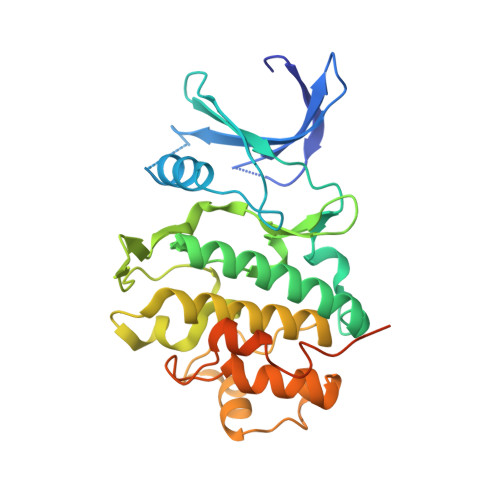Identification of a Buried Pocket for Potent and Selective Inhibition of Chk1: Prediction and Verification.
Foloppe, N., Fisher, L.M., Francis, G., Howes, R., Kierstan, P., Potter, A.(2006) Bioorg Med Chem 14: 1792
- PubMed: 16289938
- DOI: https://doi.org/10.1016/j.bmc.2005.10.022
- Primary Citation of Related Structures:
2C3J, 2C3K, 2C3L - PubMed Abstract:
Inhibition of the Chk1 kinase by small molecules binding to its active site is a strategy of great therapeutic interest for oncology. We report how computational modelling predicted the binding mode of ligands of special interest to the Chk1 ATP site, for representatives of an indazole series and debromohymenialdisine. These binding modes were subsequently confirmed by X-ray crystallography. The binding mode of a potent indazole derivative involves non-conventional C-H...O and N-H...pi-aromatic interactions with the protein. These interactions are formed in a buried pocket at the periphery of the ATP-binding site, the importance of which has previously been overlooked for ligand design against Chk1. It is demonstrated that filling this pocket can confer ligands with dramatically enhanced affinity for Chk1. Structural arguments in conjunction with assay data explain why targeting this pocket is also advantageous for selective binding to Chk1. Structural overlays of known inhibitors complexed with Chk1 show that only the indazole series utilizes the pocket of interest. Therefore, the analysis presented here should prove helpful in guiding future structure-based ligand design efforts against Chk1.
Organizational Affiliation:
Vernalis (R&D) Ltd, Granta Park, Abington, Cambridge CB1 6GB, UK. nfoloppe@vernalis.com
















